I’ve been casually checking for Cloudless Sulphur pupae out in Catch the Wind for the past two years. I’d not found one until now!
On September 11 as I walked past the patch of Partridge Pea in Catch the Wind I noticed that a Cloudless Sulphur caterpillar had attached itself to a pea pod on one of the plants and had curled itself into a “J” on the underside of the pod.
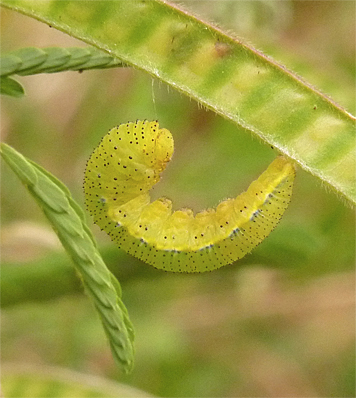
I couldn’t wait until the following morning. If the caterpillar didn’t fall prey to some wasp or other predator, or get trampled on, it would be a chrysalis in the morning.
And so it was, the next morning it was a chrysalis.
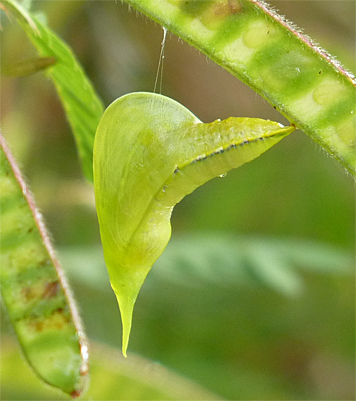
If you had clicked on the link above you saw the Cloudless Sulphur’s life cycle from egg to pupa. The adult butterfly is next. Hopefully I’ll catch it as it emerges (there’s no way to tell, nor am I claiming, that this caterpillar is the same one that hatched from the egg from the previous post).
Elsewhere, there are several bagworms (Psychidae) that are also pupating at this time. The one in the image below is on a willow in Explore the Wild.
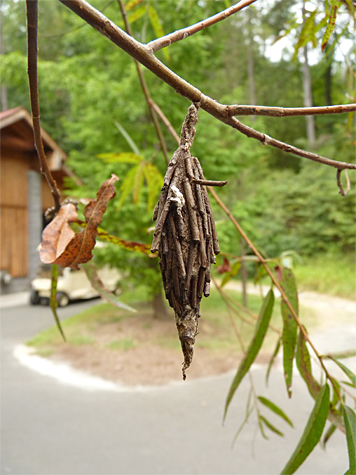
Bagworms construct a “bag” from pieces of twigs leaves and other plant material from the tree that they happen to live on. They eat, sleep, lay eggs, pupate, and even mate while living in the bags. In the case of the females, their whole lives are spent in the bag! The adult males are free to fly around, but it’s usually just to find one of the “bagged” females to mate with. Interesting life.
I found the planthopper below on a blackberry bramble very close to where the bagworm was hanging. It looks to be a Citrus Flatid Planthopper (Matcalfa pruinosa).
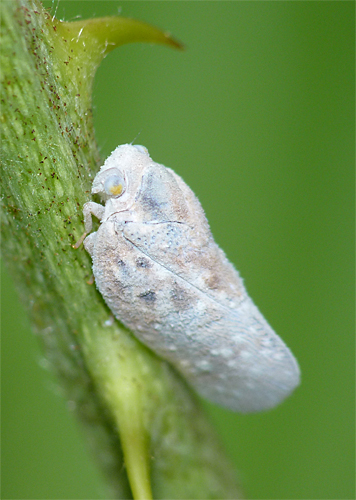
The name citrus refers to the fact that these hoppers are often found on citrus, but they can obviously be found on other plants as well.
Spiders, along with the other creatures in our midst, are preparing for the future.
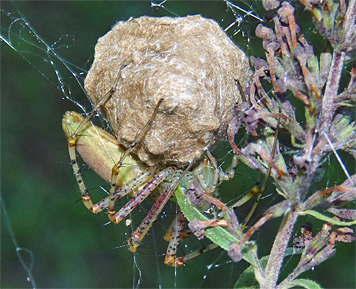
Lynx spiders don’t build webs to capture food, but instead stalk or pounce on food as it happens by. They situate themselves in advantageous locations to wait for prey, such as next to flowers or other areas of heavy insect traffic.
I’ve read that these large spiders will actually die of starvation while protecting their egg sac, refusing to leave it to secure food. This doesn’t seem to be a very good strategy, but the spiders are common, so it must pay off for them in the end.
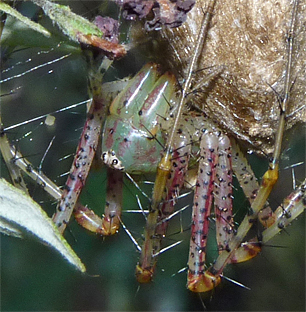
And finally, a bee.
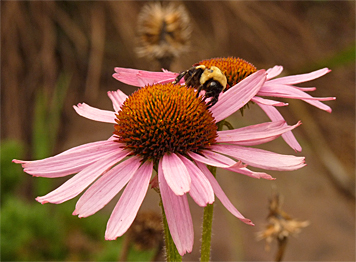

Whoa! Good caterpillar find Ranger Greg! Is there such thing as a Cloudful Sulpher Caterpillar? 🙂
Hey traveling musician, Erin Brown! From your blog sounds like you’ve been having a good time of it! Balston Spa, Saratoga Springs…brings back fond memories.
To the butterflies. There is not a Cloudful Sulphur, but there is indeed a Clouded Sulphur, a smaller butterfly than the cloudless with many more markings on its otherwise yellow wings.
Play on!